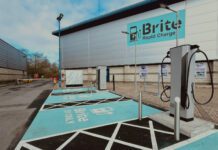Have you ever had a brilliant idea for a company, only to be assaulted by the vast amount of work it would take to get your business to the level of your would-be competitors?
It can feel daunting and disheartening to discover the huge steps you think you need to take to succeed – but the truth is, you don’t have to plan every detail of the next 10 years up front. Small business growth happens over time, and while it’s important to map out the direction you’re taking, it’s equally important not to get so caught up in planning that you never actually start doing.
Conceptualizing
This is the stage of that first idea, dreaming about your future company and deciding if it’s a viable business. This stage is important as you need to make sure your business idea is one that you’re passionate about if you’re going to dedicate your time, energy, and possibly savings, to it. If you aren’t fully committed, scrap the idea now and wait for something better to hit you.
That doesn’t mean your small business has to be able to replace your full-time earning right away. Even if you only plan to commit 5 hours a week at first, be sure that those 5 hours of commitment are going to be sustainable for you. If you’ll struggle to satisfy your customers’ expectations, your business will flop before it ever really gets off the ground.
Planning and Goal Setting
So, you’ve got a bunch of concepts and ideas. If you just jump straight into things without a plan, you might find yourself at a loss for what to do. It’s time to plan things. Do you need a business loan? If you plan to secure additional funding, you will need to set aside time to write a business plan.
Consider all the possible pitfalls you could face and how you might avoid them. Will your business need a fleet? Accidents and thefts can be costly, especially to a startup. By planning ahead, you can use GPS tracking software to help keep your fleet safe and your costs down.
Small Scale Beginnings
The initial stages of running your business can seem like a grind. Even with a plan, it’s more than likely you’ll be making mistakes, putting out fires, and learning new skills on the fly, all whilst trying to grow your brand. You might learn, for example, that the kind of modern business tech you assumed would be best, is actually inefficient, so you have to pivot.
You can’t avoid these growing pains but going through them when your business is still young is actually an advantage. It gives you the opportunity to fix issues while your business (and, by extension, your platform), is still small, rather than costly mistakes being played out on the public stage. The time when your business is small is the best time to learn by trial and error.
Learning and Re-Evaluating
Now that you have identified the problems facing your business, you can go about repairing those mistakes and finding solutions. With time and experience under your belt, those original plans might need to change, and that’s okay.
The benefit of running your small business rather than just planning it is learning, for real, what works and what doesn’t, and using that knowledge to guide the direction your business takes. You might need to completely overhaul the plans you made originally, or simply tweak those first goals. Don’t get too hung up on following a rigid plan.
Growth and Maintenance
This is the point where the business starts to take off. You’ve made it through the teething stage, you’ve learned what to do, and you’ve addressed any unanticipated issues. Now, just keep doing what you’re doing.
Keep improving, keep planning. Essentially, rinse and repeat. Your business growth will happen faster and more easily at this point. You never know – one day soon you may even get a day off.

![business_a-contract-of-friendship_212K[1] Galway Daily business The 5 Stages of Small Business Growth](https://media.galwaydaily.com/wp-content/uploads/2015/12/20233409/business_a-contract-of-friendship_212K1-696x436.jpg)











